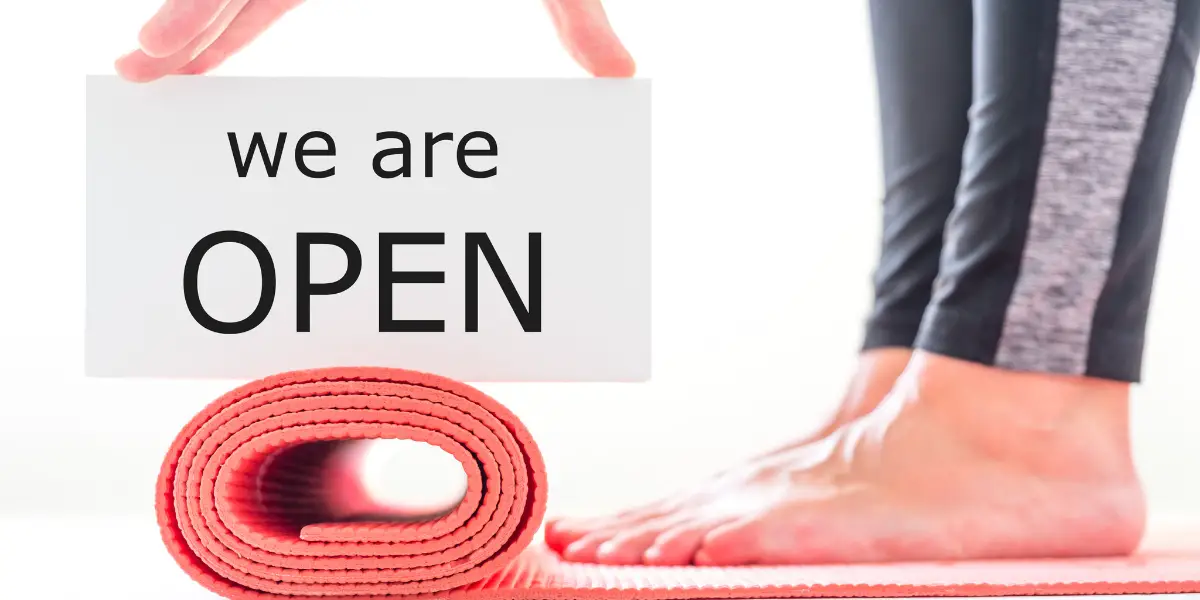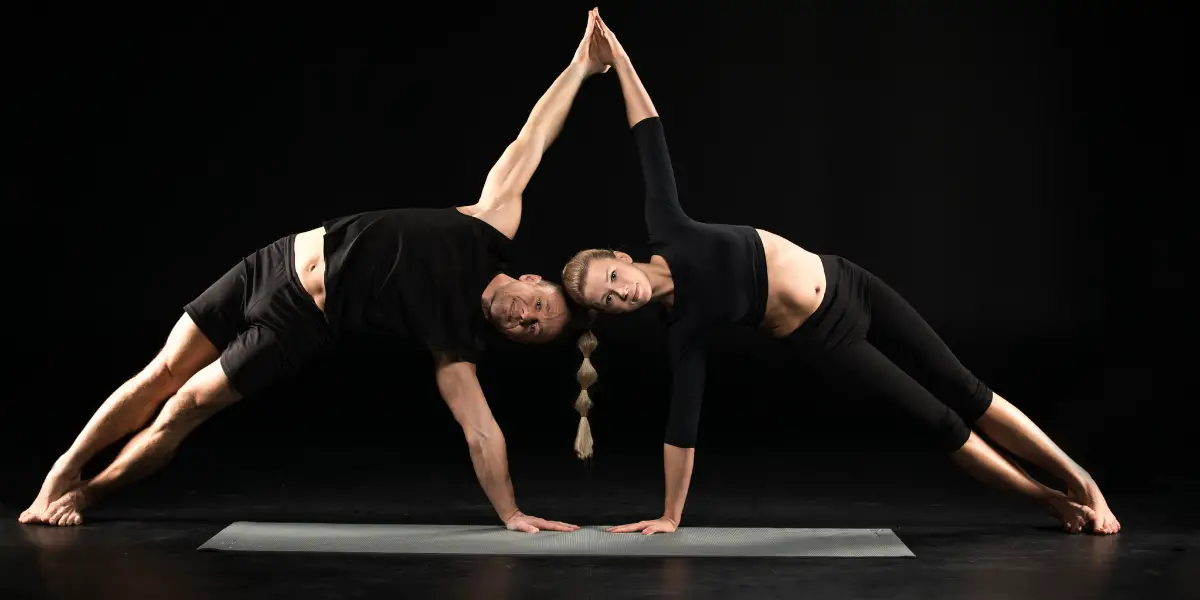Are you an athlete who wants to take your performance to the next level? You might be surprised to learn that Pilates can help you achieve this goal.
Pilates can work for athletes as it helps improve flexibility, core strength, balance, and overall body awareness. It can also aid in injury prevention and rehabilitation. Many athletes have incorporated Pilates into their training routine to enhance their performance and reduce the risk of injuries.
Pilates is not a gentle fitness regime, as many believe, but is instead an effective and challenging workout for athletes of all levels. Pilates can help athletes to build strength, improve performance, and increase their concentration.
Fitness experts agree that athletes can incorporate Pilates moves into their workouts in two different ways – by using the Pilates moves for rehabilitation and by using the exercises for a more vigorous workout.
Is Pilates good for athletes?
Pilates can be an invaluable form of exercise for athletes. It helps to develop strong core muscles, which are essential for any athlete looking to take their performance to the next level.
This is because a strong core can help improve posture, balance and coordination, reduce the risk of injury, and increase functional strength. Pilates exercises also focus on developing body awareness and control over movements in all planes of motion, helping athletes to become aware of their bodies and how they are moving while performing activities.
Furthermore, Pilates workouts are designed to target stiff or weak muscles that often result from repetitive movements during training sessions or competition.
For elite athletes or those with a personal trainer, customised Pilates workouts can be tailored specifically for them to help improve fitness levels and athletic performance.
Tennis players, for example, may benefit from a series of Pilates exercises that focus on improving flexibility in the hips so that they can have better rotational speed when serving or returning shots.
These targeted exercises can then be incorporated into existing workout routines as part of a comprehensive fitness plan.
Here’s a real example you can try yourself. If you’ve been running, or doing any sport that involves running or sprinting, this post-workout routine is an ideal way to help stretch, strengthen and recover.
What are the benefits of doing Pilates for athletes?
Pilates is an excellent form of exercise for athletes, as it offers a range of benefits which can help improve performance and reduce the risk of injury. Developed by Joseph Pilates in the early 20th century, Pilates focuses on strengthening the core muscles, increasing flexibility, and improving body awareness and control.
This can be especially beneficial for athletes who require a certain level of strength and mobility to perform at their best. Pilates exercises also target muscles that may become stiff or weak due to repetitive movements during training or competition.
1. Improved Stability and Coordination
Pilates is a great way to improve stability and coordination for athletes. The core muscles, when strengthened, create a strong foundation that helps to maintain balance and keep the body in control during sport activities.
The focus on developing and maintaining balance helps with dynamic coordination, which is essential for complex movements like jumping, running and changing direction.
With Pilates, athletes can build a strong foundation of stability and coordination that will help them to perform better and stay injury free.
2. Increased Strength, Power and Endurance
Pilates helps increase strength, power and endurance for athletes by improving flexibility, rebalancing the body, increasing power, improving efficiency of movement, preventing and recovering from injuries, and refining their sport.
By incorporating Pilates into an athlete’s training regime, they will be able to develop more functional and dynamic muscle strength, increase their lung capacity and oxygen to the blood, achieve an overall sense of satisfaction and satisfaction, assist with injury rehabilitation and prevention, relieve stress and increase their athletic focus, strengthen coordination, flexibility and stamina, and learn how the body works and functions. All of these benefits combine to help athletes increase their strength, power and endurance.
3. Improved Posture and Alignment
Pilates can help improve posture and alignment by targeting specific muscle groups that tend to weaken or become tight due to daily activities. Through various exercises and poses, Pilates helps to stretch and strengthen the muscles, thereby improving posture.
Additionally, Pilates can help correct postural problems that can arise from muscle tightness, decreased fitness, and muscle weakness. Moreover, Pilates helps to increase coordination, flexibility, and stamina that can also help improve posture.
Finally, Pilates helps to improve body awareness and proprioception. Through this improved awareness, athletes can learn how the body performs and functions, allowing them to have better control over their posture and alignment. Thus, Pilates can be an effective tool for improving posture and alignment in aged athletes.
4. Reduced Risk of Injury
Pilates is a great way to reduce the risk of injury for athletes, as it focuses on training them to maintain correct postural alignment, which helps reduce the likelihood of pain or aggravating an old injury. Pilates movements are also low-impact, helping to further lower the risk of injury.
Athletes also benefit from Pilates as it builds whole-body stability, which helps prevent injuries and speeds up recovery time after an injury does occur. Additionally, Pilates helps to rebalance the body, allowing for improved power and efficiency of movement, which can help reduce the risk of overuse injuries.
Finally, Pilates can be used to promote injury recovery, as well as to build a foundation for a healthy body. All of these reasons make Pilates an ideal choice for athletes who are looking to reduce their risk of injury.
5. Improved Core Musculature and Abdominal Strength
Pilates is an effective exercise in improving core strength, including the rectus abdominis (abs/six-pack), external obliques (abdomen sides), and rectus femoris (leg muscles that make part of your quads), as well as peripheral mobility. This is because the core is the central foundation of the body which holds it together and allows for stability, strength, and control. When these core muscles are strong, the rest of the body is less likely to be compromised.
Regular Pilates exercises have been shown to improve an athlete’s flexibility, range of motion, and mobility, resulting in greater freedom of movement.
Pilates is a great exercise for athletes to enhance their core and abdominal strength, along with flexibility and range of motion.
6. Improved Breathing Techniques
Pilates can help athletes improve their breathing techniques by increasing their body awareness. Through Pilates, athletes can learn to use both lungs efficiently and develop proper breathing techniques which can help them perform at a higher level.
Proper use of both lungs allows the body to draw in more oxygen, which is necessary to repair cells after excessive training, and provides the athlete with more energy. Pilates also helps to strengthen muscles that have an important supportive role which can help to prevent injuries.
7. Increased Range of Motion
Range of motion (ROM) is an important component of physical fitness for athletes. ROM helps to maintain functional strength, flexibility and mobility which are essential for optimal athletic performance.
Pilates can be very beneficial in improving ROM as it focuses on increasing range of movement through a variety of exercises that target the entire body. Through this, athletes can gain more control over their movements, prevent muscle imbalances and improve their overall fitness levels.
Pilates can help improve range of motion by stretching multiple muscles at the same time in all three planes of motion. This opens up the entire kinetic chain, and simulate motions that are specific to a particular sport.
This helps to reduce muscle imbalances that can result in injury, while also increasing strength, flexibility, balance, and stamina.
The Importance of Core Strength
Core strength is essential for athletes looking to improve their performance levels and reduce the risk of injury. Core muscles help to stabilize the body during physical activity, making them key for athletes looking to increase their functional strength.
Pilates is one way that athletes can target core muscles and build strength within their entire body. Pilates workouts focus on engaging all muscle groups in a balanced way, helping build stability as well as core strength.
Working with a qualified instructor is key to getting the most out of each workout and ensuring proper form is being used throughout each exercise.
A strong core is essential for athletes to maximize their performance and reduce the risk of injury. With Pilates, athletes can target core muscles and build a strong foundation for increased strength and flexibility. So now that you know the importance of a strong core, let’s take a look into what it is composed of!
What is the Core?
The core is composed of a series of muscles which are responsible for providing stability and support to the body. The core muscles include the transverse abdominis, multifidus, obliques, rectus abdominis, erector spinae, and pelvic floor muscles.
When these muscles are strong and working together properly, they can help reduce strain on other body parts during physical activity. This can help decrease the risk of injury while also improving performance levels.
Core strength is important for athletes as it helps keep the spine in proper alignment while protecting against muscle imbalances and stiff muscles.
How Pilates Strengthens the Core Muscles
Pilates is an excellent way for athletes to build strength in the core muscles and increase performance levels. Through precise and controlled movements, Pilates helps engage the entire body while focusing on strengthening and toning the major muscle groups of the core. By targeting these muscles, athletes can improve their range of motion, posture, and balance while also reducing the risk of injury.
Benefits of a Strong Core for Athletes
For professional athletes, a strong core helps improve technique and prevent muscle imbalances that can lead to fatigue or injury. For example, tennis players often incorporate Pilates into their routine in order to increase body awareness and develop the necessary muscles for repetitive movements during a match. Personal trainers may also suggest Pilates workouts to address stiff muscles from overuse or tightness caused by an imbalance in strength.
Whether you are just starting out or looking for ways to take your athletic performance to the next level, consider trying Pilates! With its focus on developing strength through controlled movements and engaging all major muscle groups, Pilates can help athletes achieve their goals without putting too much strain on their bodies.
Final Thought
In conclusion, Pilates is an excellent form of low-impact exercise that can help athletes develop strength in the core muscles, improve posture and balance, reduce muscle imbalances, and ultimately enhance overall fitness levels.
With its focus on working through all planes of motion and engaging major muscle groups in a balanced way, it’s no wonder why Pilates has become such a popular workout among elite athletes.




